7 Endangered Iconic Wildlife to See in Sabah
Sabah’s jungle may take you by surprise as it is one of the world’s oldest rainforests. It has been around for 130 million years, and it is home to flora and fauna that are unique to the jungle of Borneo.
If you are up for an exhilarating journey into the wild, head to the state’s east coast and explore trekking in the protected rainforest to experience Sabah’s extraordinary biodiversity or visit the wildlife rehabilitation centre to learn about conservation efforts. Alternatively, take a river cruise and keep an eye out for Sabah’s very own “Big Five” as well as other rare species.
Here, we list endangered and totally protected species found in Sabah to help you learn something about them.
1. Borneo Pygmy Elephant (Elephas maximus borneensis)
The Bornean elephants, also known as Pygmy elephants, are the smallest subspecies of Asian elephants with a more docile temperament. Wild Bornean elephant population can be found in the Lower Kinabatangan Range, Central Sabah Range, and Tabin Range.
The pygmy elephants have smaller face feature and are known to be more gentle in nature. They have longer tails and straighter tusks. In 2016, a rare pygmy elephant with tusks growing backward was spotted but wildlife official believed “it could be a congenital defect or maybe because of inbreeding.”
Poaching, illegal wildlife trade, habitat loss, fragmentation, and human-wildlife conflict are the primary threats to the Bornean pygmy elephant. Experts estimate the Bornean elephant population in Sabah to be fewer than 1,500.
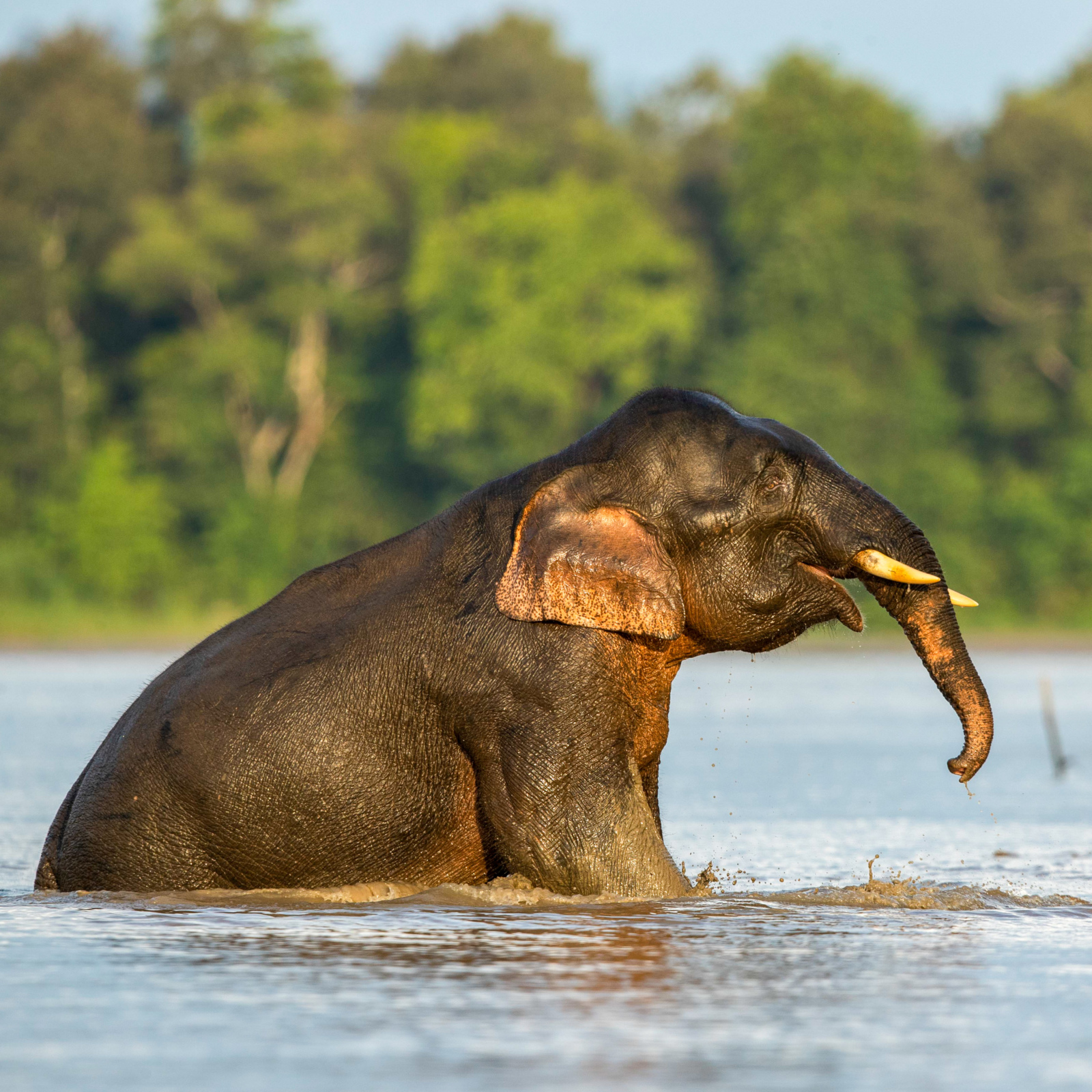
Conservation status:
Classified as “Endangered” under the International Union for Conservation of Nature (IUCN) Red List of Threatened Species.
Listed as threatened with extinction under Appendix 1 of Convention for International Trade of Endangered Species of Wild Fauna and Flora (CITES)
Classified as totally protected species under Schedule 1 of the Sabah Wildlife Conservation Enactment.
2. Bornean Orangutan (Pongo Pygmaeus)
Sabah is estimated to have 11,000 Bornean orangutans. However, deforestation, palm oil plantations, and hunting are threatening the population’s survival.
The orangutans in Sabah are the smallest in size. While the Kinabatangan River, Danum Valley, Deramakot Forest Reserve, and Tabin Wildlife Reserve are regarded as the best places to see orangutans in the wild, visitors can observe orangutans up close at the Sepilok Rehabilitation Centre in Sandakan. The centre, which sits within the Kabili Sepilok Forest Reserve, was established in 1964 and was the world’s first facility to focus on rehabilitating orphaned orangutans.
According to the centre’s website, approximately 80 orangutans live independently in the reserve, with approximately 25 orphaned orangutans housed in nurseries. Did you know that 97 percent of orangutans’ DNA match with humans? Impressive is their social skills and problem-solving abilities.
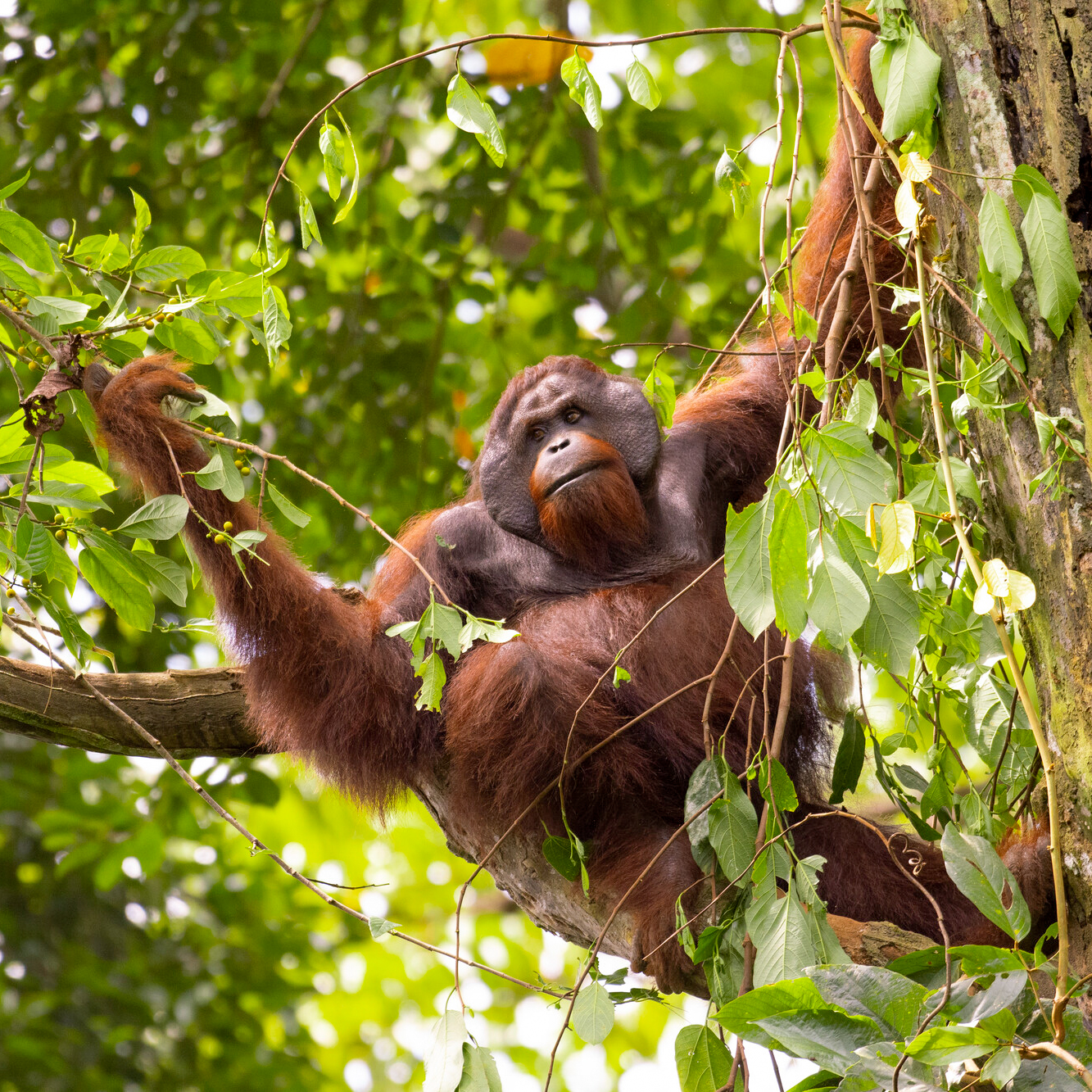
Conservation status:
Classified as “Critically Endangered” under the International Union for Conservation of Nature (IUCN) Red List of Threatened Species.
Listed as threatened with extinction under Appendix 1 of Convention for International Trade of Endangered Species of Wild Fauna and Flora (CITES)
Classified as totally protected species under Schedule 1 of the Sabah Wildlife Conservation Enactment.
3. Proboscis Monkey (Nasalis larvatus)
Dubbed as ‘Dutch monkey’ due to its feature, this odd-nosed or long-nosed monkey species is a fascinating creature to observe. Endemic to the jungle of Borneo, the proboscis monkey is the primate world’s most prolific swimmer and will leap out of the trees into the water.
This mammal is restricted to riverine peat swamps and mangrove forests of the coastal lowlands. In 2005, it was estimated about 6,000 proboscis monkeys were distributed along the coastal areas of Sabah. Their population decline is directly attributed to drastic habitat loss and poaching.
Population of proboscis monkey are found at Klias, Tangkarason, Paitan, Sugut River, Sandakan, Kinabatangan river, Segama river, Lahad Datu, Tawau Bay, Bongawan, Kota Belud, and Labuk, among others.
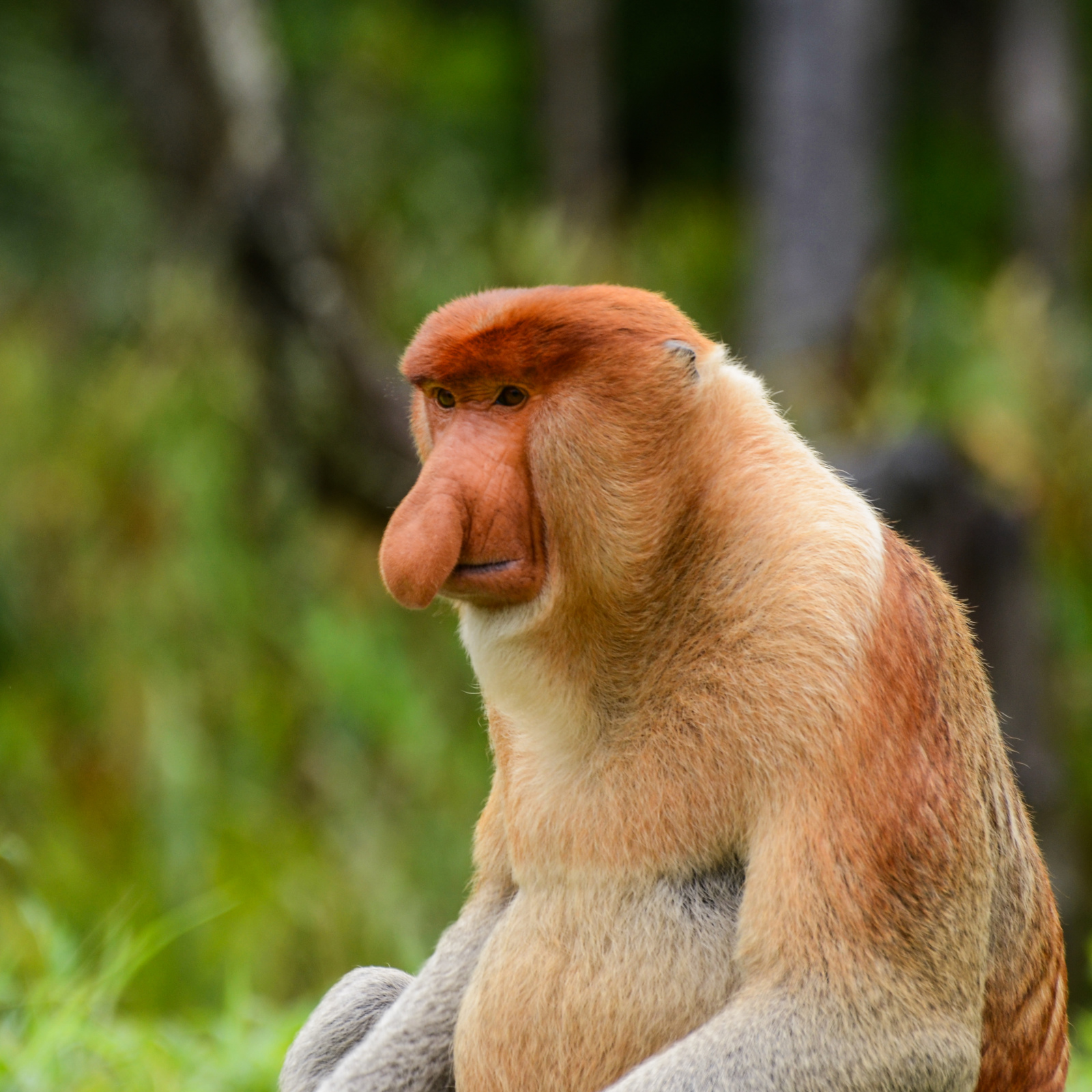
Conservation status:
Classified as “Endangered” on the International Union for Conservation of Nature (IUCN) Red List of Threatened Species.
Listed as threatened with extinction under Appendix 1 of Convention for International Trade of Endangered Species of Wild Fauna and Flora (CITES)
Classified as totally protected species under Schedule 1 of the Sabah Wildlife Conservation Enactment.
4. Sun Bear (Helarctos malayanus)
The Borneo sun bear, also known as the honey bear, is the world’s smallest bear with extremely long tongues used to extract insects and honey from beehives. It is the second rarest bear species, after the giant panda. While the wild population of sun bears is unknown, the Bornean Sun Bear Conservation Centre (BSBCC) in Sandakan is home to over 40 bears. It is the only facility in the world dedicated to caring for orphaned or ex-captive bears.
The sun bears, like other endangered species, face threats from habitat loss and poaching. This animal is also kept as a pet illegally and hunted for its bile and other body parts used in traditional medicine.
Sun bears are the least-studied species of bear in the world, and the BSBCC supports research projects to help protect them. At the centre, bears are trained to develop survival skills before they are released back into their natural habitat.
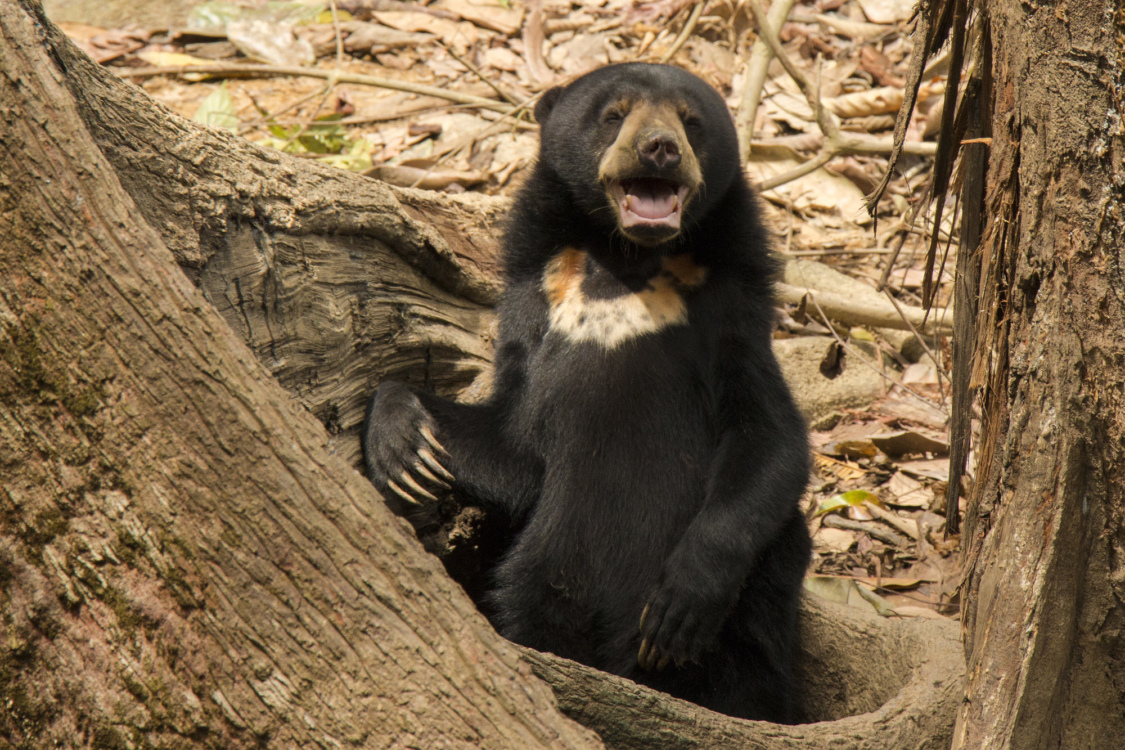
Conservation status:
Classified as “Vulnerable” on the International Union for Conservation of Nature (IUCN) Red List of Threatened Species.
Listed as threatened with extinction under Appendix 1 of Convention for International Trade of Endangered Species of Wild Fauna and Flora (CITES)
Classified as totally protected species under Schedule 1 of the Sabah Wildlife Conservation Enactment.
5. Banteng (Bos javanicus)
The Bornean banteng is deemed Sabah’s most endangered large mammal after the extinction of the Sumatran rhinoceros. With less than 300 bantengs estimated in Sabah, this species of cattle is on the verge of extinction and is being threatened by poaching, habitat loss, and forest fragmentation.
Unlike domesticated cattle, the banteng dwells in the rainforest and is extremely elusive. These wild jungle cattle are distinguishable by the white stockings on their lower legs and rump. The Banteng’s diet includes salt lick and this animal is often spotted near sodium deposits.
Did you know banteng often lick each other to strengthen the bonds with the other individuals in the herd? This is called the ‘cattle kisses’.

Conservation status:
Classified as “Endangered” under the International Union for Conservation of Nature (IUCN) Red List of Threatened Species.
Classified as totally protected species under Schedule 1 of the Sabah Wildlife Conservation Enactment.
6. Sunda Clouded Leopard (Neofelis diardi)
This medium-sized wild cat is native to the islands of Borneo and Sumatra. They are believed to be about 750 left in Sabah’s wild. Although the distribution of Sunda clouded leopards is currently unclear, they are spotted and photographed in Tabin Wildlife Reserve, Kinabatangan, Tawau highlands, Danum Valley Conservation Area, Deramakot Forest Complex, and Crocker Range.
Known as vampire cats, the Sunda clouded leopards have longer canine teeth and more dots in their cloud-shaped markings. They are flexible and can rotate their ankles while climbing trees.
The population of Sunda clouded leopards is declining due to deforestation and poaching. This species is known to be elusive and nocturnal. They are hunted for their coat, teeth, and body parts used in traditional medicine.
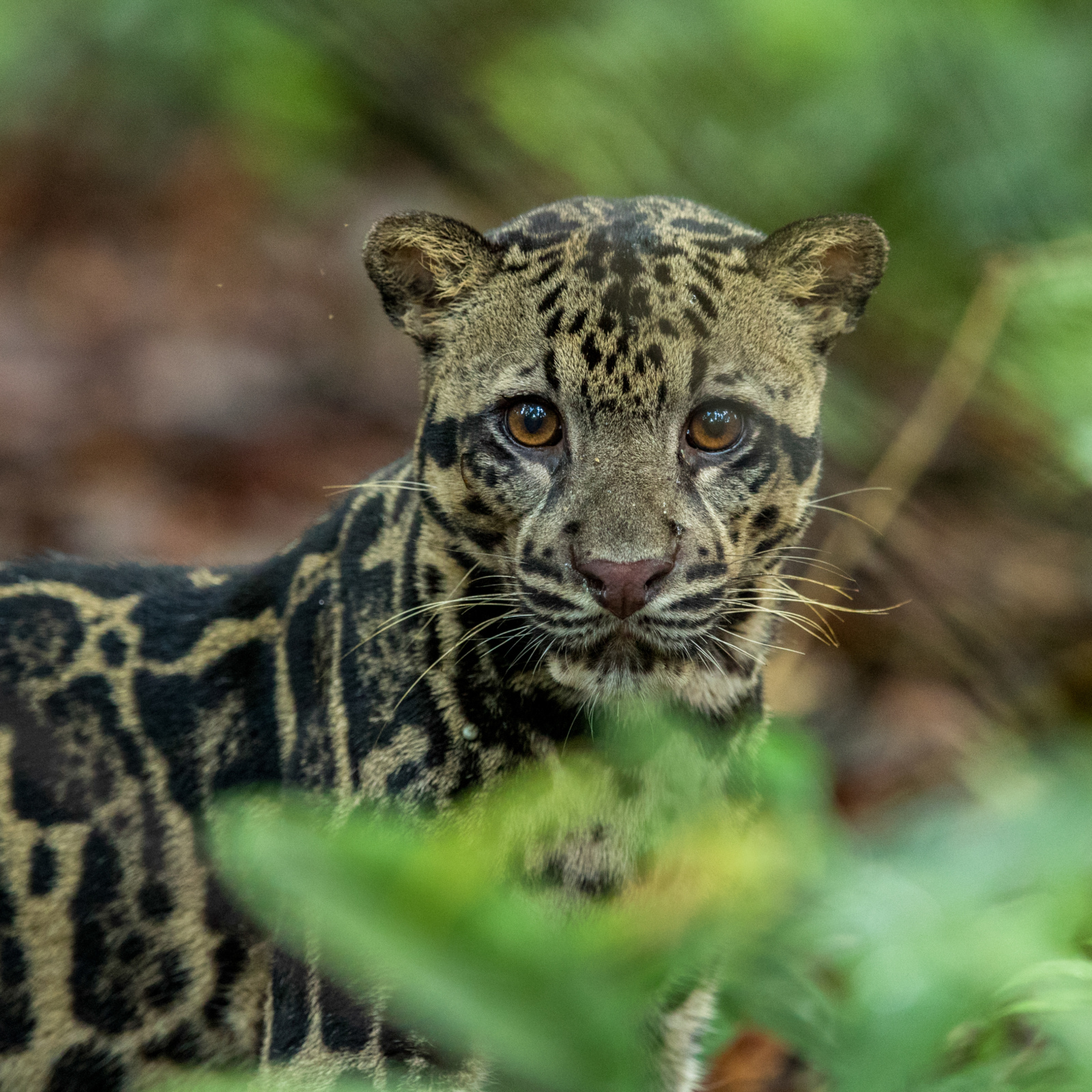
Conservation status:
Classified as “Vulnerable” under the International Union for Conservation of Nature (IUCN) Red List of Threatened Species.
Listed as threatened with extinction under Appendix 1 of Convention for International Trade of Endangered Species of Wild Fauna and Flora (CITES)
Classified as totally protected species under Schedule 1 of the Sabah Wildlife Conservation Enactment.
7. Sunda Pangolin (Manis javanica)
Did you know that the pangolins are the most trafficked mammals in the world? Poaching for their meat and scales is driving many species of pangolins, including the Sunda pangolin in Sabah, to the brink of extinction.
Between 2007 and 2009, a group in Sabah reportedly trafficked 22,000 pangolin carcasses and 834.4kg of pangolin scales. The recurrence of such illegal trade had prompted the Sabah government to upgrade the Sunda pangolin to a fully protected species in 2018.
The Sunda pangolin has low immunity. Because Sunda pangolins are solitary and nocturnal, their population in Sabah is unknown.
Conservation status:
Classified as “Critically Endangered” under the International Union for Conservation of Nature (IUCN) Red List of Threatened Species.
Listed as threatened with extinction under Appendix 1 of Convention for International Trade of Endangered Species of Wild Fauna and Flora (CITES)
Classified as totally protected species under Schedule 1 of the Sabah Wildlife Conservation Enactment.
Cover photo credit: Lee Yen Phin